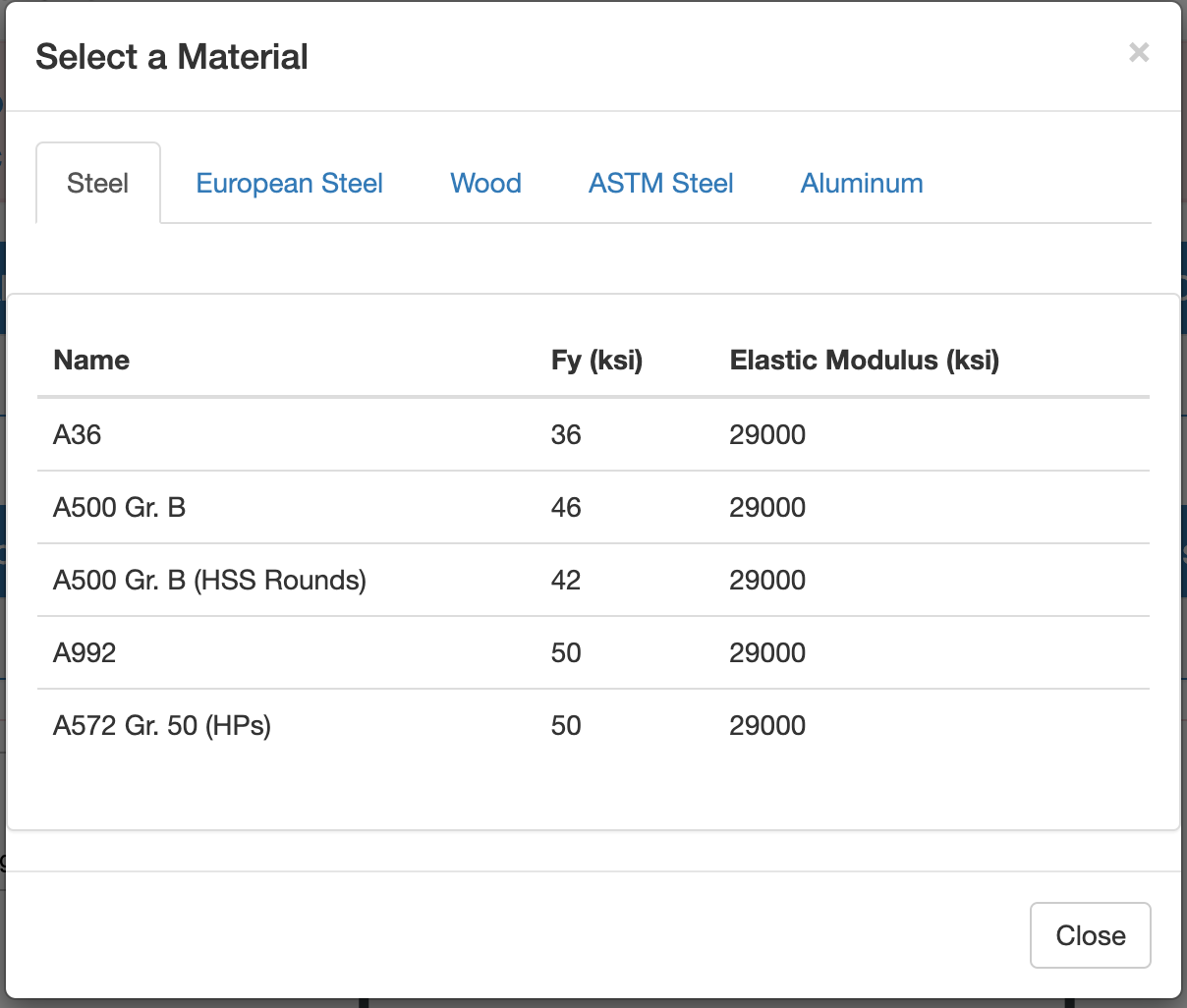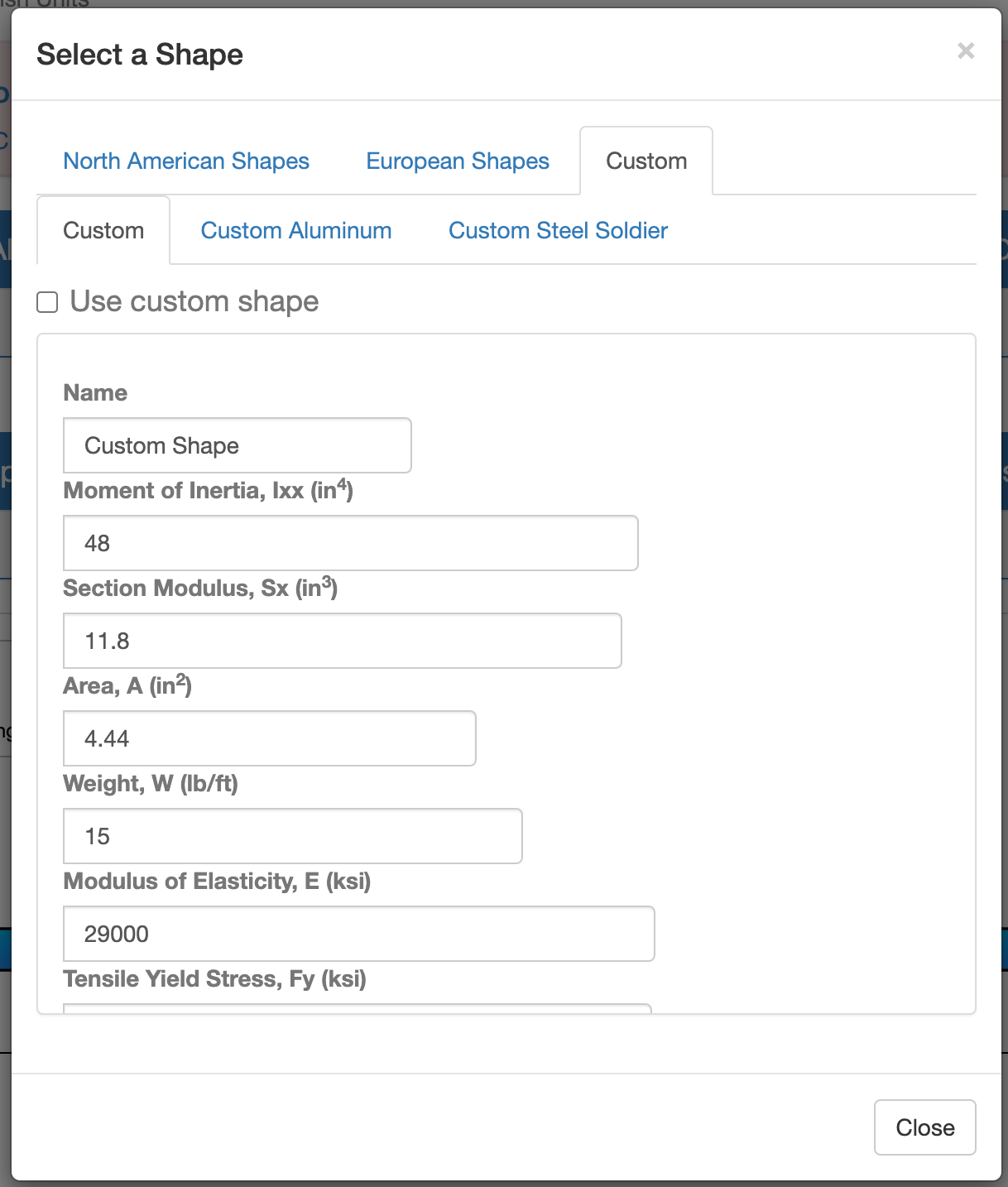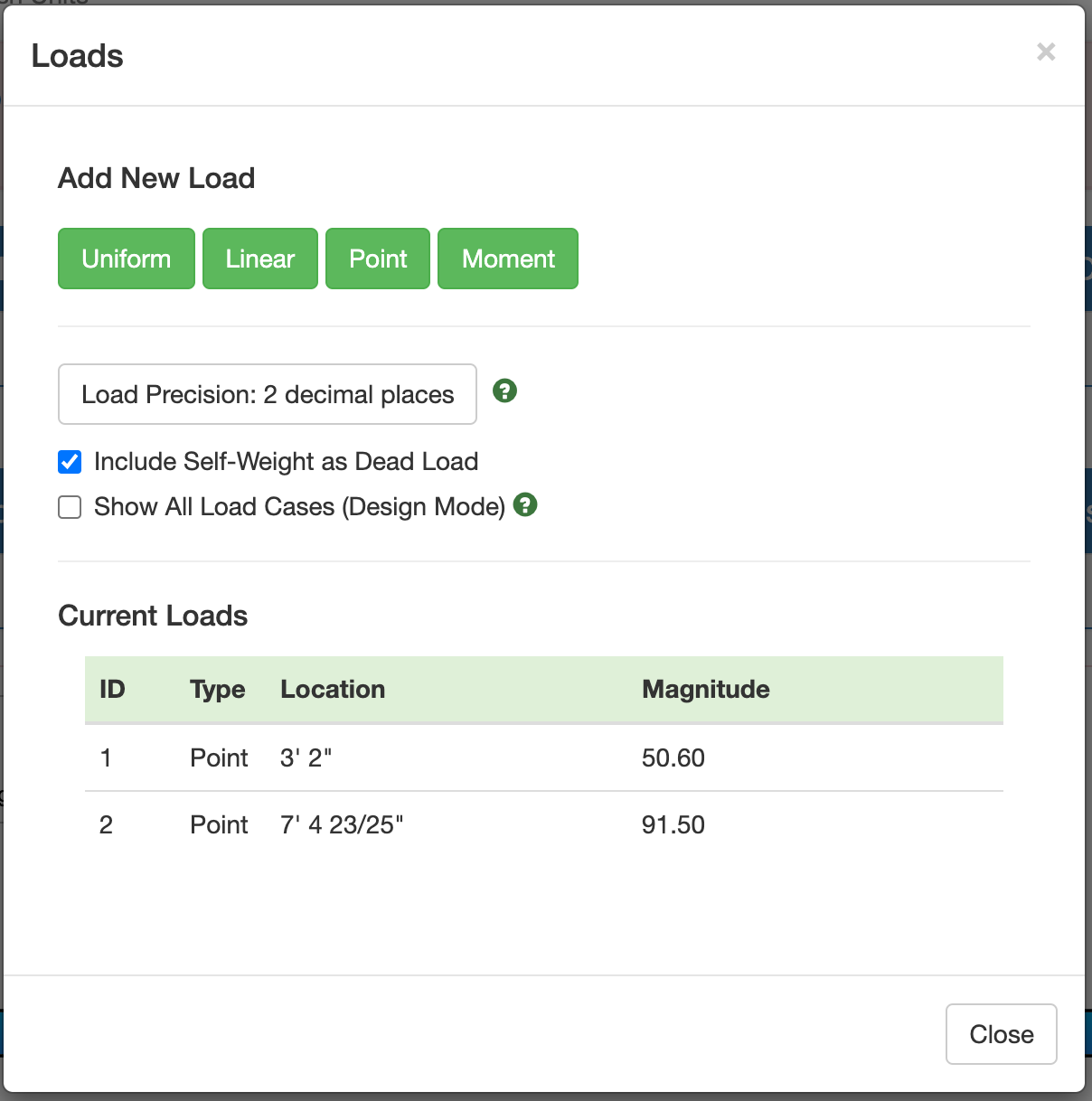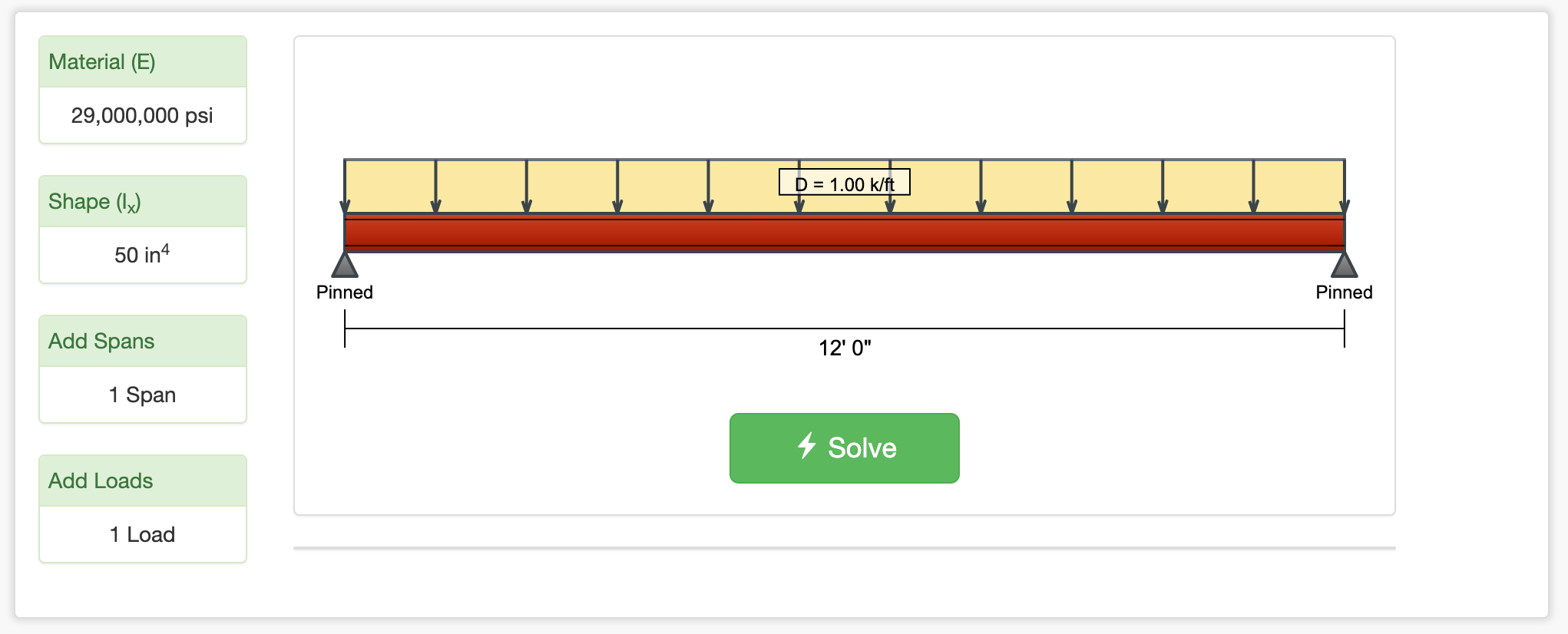Beam Design Software
Designing beams is one of the most important aspects of the construction industry. Beam design can be a tedious process, especially when solving indeterminate beam problems or beams with complex boundary conditions and loads. With the aid of modern technology, many applications exist today to simplify the process of beam design.
WebStructural provides a suite of applications to help you design your beam and choose the appropriate material. Our applications are suitable for quick checks as well as more complex structural analysis. Our beam designer application can be used to quickly narrow in on initial beam sizes for light to medium structural steel and woods, making your design process more efficient and cost-effective.
Finite Element Analysis (FEA) is the method we use to solve beams with complex loads and boundary conditions. It is one of the most common tools used in structural engineering to solve deflections and stresses in structures that are too complex for classical, closed-form analytic solutions. Finite element analysis has been used for decades to simplify structural analysis and understand overall structural behavior under complex loads. The proliferation of modern compute infrastructure, specifcally cloud computing, allows us to bring this sophisticated analysis technique to the web. While there are many structural analysis applications on the market today that employ this technique, the complexity and sophistication of these programs varies widely; and few are doing it on the web. Our goal with WebStructural is to reduce complexity, making structural analysis and beam design approachable for a wide audience. We provide a simple, intuitive, web-based interface that is intended to help you get your job done quickly.
The finite element analysis method relies on Hooke’s Law to determine the solution to a beam. Initially, the beam is discretized into small elements and a spring constant is established for each element. Forces are applied to the springs, and a stiffness matrix (k) is generated from the small elements. Displacements are determined by inverting the stiffness matrix and multiplying it by a force vector. From Hooke’s Law (F=kx), we can determine the displacement (x) as x = F/k. Once we have the displacement, we can numerically differentiate the displacement curve to obtain rotations, shears and moments. This is all done with a little linear algebra like this |F|=[k]|x|. Our beam designer and our multi-span beam calculator ustilize this technique.
Our Beam Designer Calculator can help you design beams with complex boundary conditions and loads. You can use the software to design a beam for free by following the steps shown below:
-
Select the material you want to use. You can choose from Steel, European Steel, Wood, ASTM Steel, and Aluminum.

-
Select the shape of the material to be used. There are standard shapes you can choose from, but you can also customize
the shape.

- Add spans. Note that there are only two spans available for free. You can sign up to add more spans to your beam.
-
Add loads. There are four types of loads available: uniform, linear, point, and moment.

- Select the bracing. You can choose from continuous bracing, equally spaced, custom bracing, and completely unbraced.
- Click calculate. The beam design calculator will automatically check the shear, bending, and deflection. It will also check if the chosen material will be sufficient to carry the loads applied. Detailed reports on the calculations are also provided.
Our Multi-Span Beam Design Calculator can help you analyze complex loads and multi-span beams in just a few minutes. This application generates shear force diagrams, bending moment diagrams, deflection curves, and slope curves for beams with complex boundary conditions, multiple spans, and multiple loads. Follow these steps below to use the free Multi-Span Beam Beam Calculator.
- Set the modulus elasticity (E); this is dependent on the material of the beam to be used.
- Set the moment inertia (Ix), which is dependent on the shape of the beam to be used.
- Add spans and set the length of the span. The maximum number of spans that can be calculated is three (3).
- Apply loads. You can choose the type of loads—uniform, linear, point, and moment—and set at which point in the beam to apply them.
- Click the solve button to display displacement, shear, and moment diagrams.

And that's it, just a couple of options for your structural analysis needs. We offer other a few other free applications such as our Cross Section Property Calculator and our Anchor Bolt Designer. For only $19 a month, you can save and print projects, access other materials such as different types of metal channels, engineered lumber, and custom shapes and materials. Your subscription also unlocks the beam span limit allowing you to analyze and design beams with more than two spans (multiple supports).
Visit our website to find exclusive deals on our beam design applications. For further inquiries, do not hesitate to contact us.